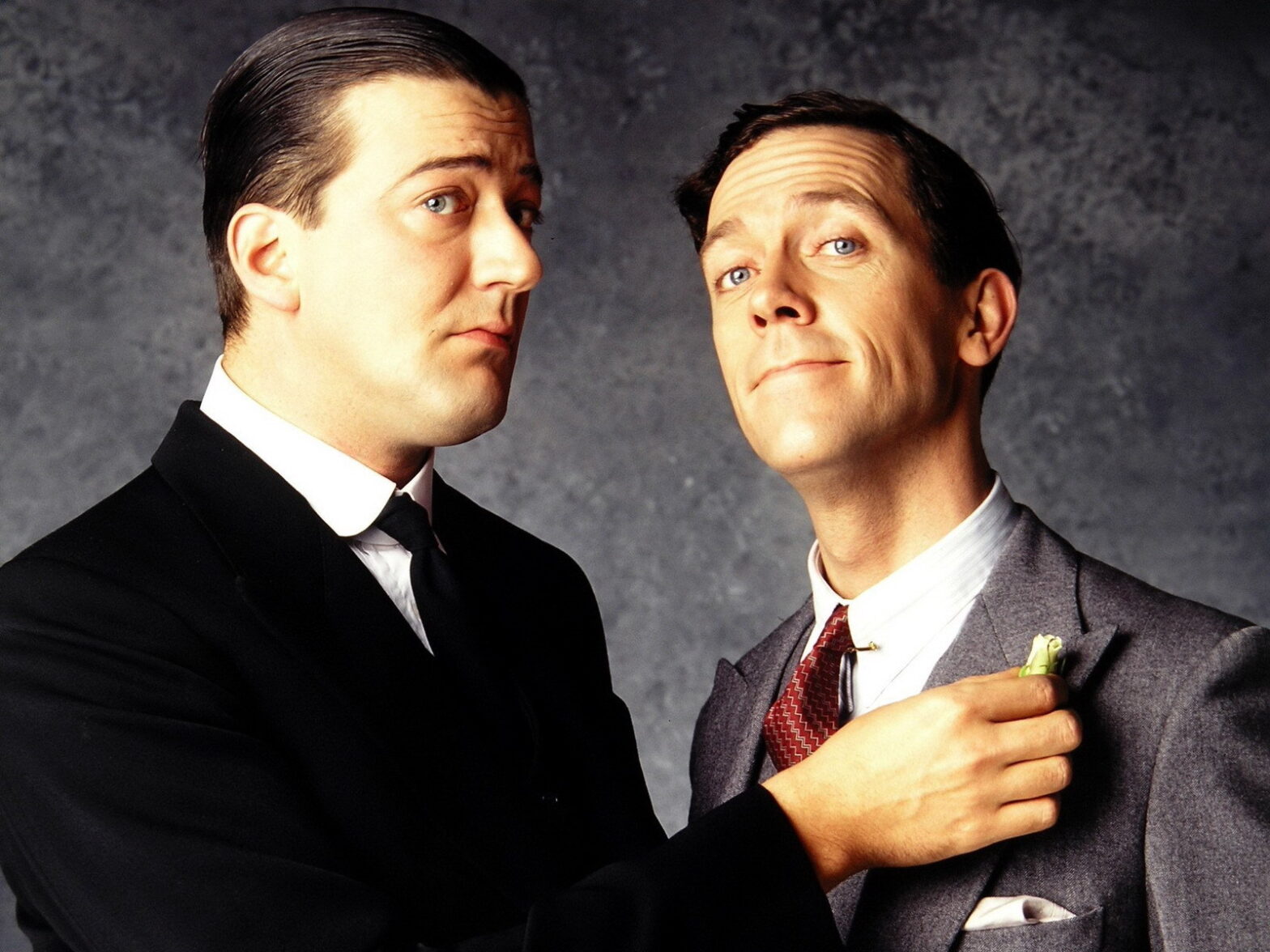Over the past month, I watched through the four season of ITV’s Jeeves and Wooster starring Stephen Fry as the “gentleman’s personal gentleman” Reginald Jeeves and Hugh Laurie as Bertram Wilberforce Wooster from the early 90s. On Friday, I sat down and watched the final episode.
I had watched some of the episodes on PBS and, later, A&E back in the 90s, and then about five years ago I picked up the complete series on DVD for a very good price (about fifteen dollars, if memory serves) and watched through it then. But then I had this “itch,” shall we say, to watch the series again, and at the beginning of March I went through my DVD collection to find it, as I had no idea where I had packed it away.
Eventually, the DVD set found and a free evening discovered, I sat down with “Jeeves Takes Charge,” and away I went.
The immediate thing that struck me on watching Jeeves and Wooster was how much it seemed that P.G. Wodehouse had created the characters expressly for Fry and Laurie, thirty years before they were born. Fry, the man with a brain the size of Kent, and Laurie, known, before House, for his blithering idiot roles. That was their paradigm in Blackadder, and that was how many sketches of A Bit of Fry & Laurie played (Fry, the smart and unflappable one; Laurie, the overly excitable one). If I squinted just so, I could have imagined Fry’s Jeeves as a descendant of Blackadder II‘s Lord Melchett and Laurie’s Bertie as a descendant (through a bastard line, obviously) of Blackadder the Third‘s Prince George. Then I put that thought aside. 🙂
The next thing that struck me was how much fun it appeared that Fry and Laurie were having. Fry’s dry wit was matched perfectly to Laurie’s excitable puppy schtick, and the series was at its best in the interplay between the two of them.
Then there were the constant appearances of Downton Abbey. Or, should I say, Totleigh Towers? Yes, Highclere Castle, used by Downton Abbey as the home of the Earl of Grantham and his family, was also used by Jeeves and Wooster as Totleigh Towers, the home of Sir Watkyn Bassett. “Oh, hey, that’s the impressive staircase!” “Oh, that’s the Earl’s library!” “Oh, that’s the sitting room!” “Oh, there’s a corridor where Lady Mary had a hushed conversation with Anna!” “Oh, that’s where they carried poor Kemal after he expired!” Certainly not the reaction they were going for in 1992, but an amusing reaction all the same.
Some episodes I liked more than others, and I thought the second season was the best overall, in no small part thanks to its introduction of Sir Roderick Spode, a fascist wannabe and an utterly comical antagonist for Bertie Wooster. The third season was probably the weakest; its three episodes in Prohibition-era New York City are listless and don’t work particularly well, with the Cyril Bassington-Bassington episode as the worst of the run. (Though when the series returns to New York in the fourth season, I liked those episodes more, maybe because the stories were stronger.)
One problem rears its annoying head when watching the four seasons in close proximity — the constant recasting of roles. Fry and Laurie are constant in their roles, but the characters they interact with largely are not. For instance, Michael Siberry plays Bingo Little in the first two seasons, and for the final two seasons he’s replaced by Pip Torrens. Francesca Folan originates Madeleine Bassett, but she’s replaced twice, and then Folan returns in the third season as Lady Florence Craye. Among Bertie’s friends, Robert Daws remains as Tuppy Glossop through all four seasons (and he makes such an impression as Tuppy that I wouldn’t have accepted anyone else in the role), and among his paramours only Honoria Glossop is constant in the person of Elizabeth Kettle (and, like her cousin Tuppy, I doubt I’d have accepted anyone else). Thankfully, Roderick Spode remains constant; I doubt anyone but John Turner could have brought the same absurd menace to the role.
In most cases, I preferred the initial castings and would have preferred them to stay, but in a few instances the recastings were actually better. I didn’t particularly like Richard Braine’s Gussie Fink-Nottle, but I couldn’t have accepted Richard Garnett, the originator of the role, being such as ass toward Madeleine Bassett. Sharon Holm’s Pauline Stoker was way over-acted, so I was glad when she was replaced. Martin Clunes’ Barmy was much more enjoyable than whoever originated the role in the first season. I’m sure there were sound reasons of actor availability for the recastings, but more cast stability would have been nice.
The final episode of the series was wonderful, and I imagine they knew it was the final episode when it was written. (I’ve read some Wodehouse, but I’m not sure how much more Jeeves and Wooster material there was that had not been adapted.) It’s a slow burn on that fuse, and when it explodes (or, should I say, the Plumbo-Jumbo) it explodes spectacularly.
I’m glad of the twenty-odd hours I spent with Stephen Fry, Hugh Laurie, Reginald Jeeves, and Bertie Wooster over the last month. I’m just sorry there’s not more.
